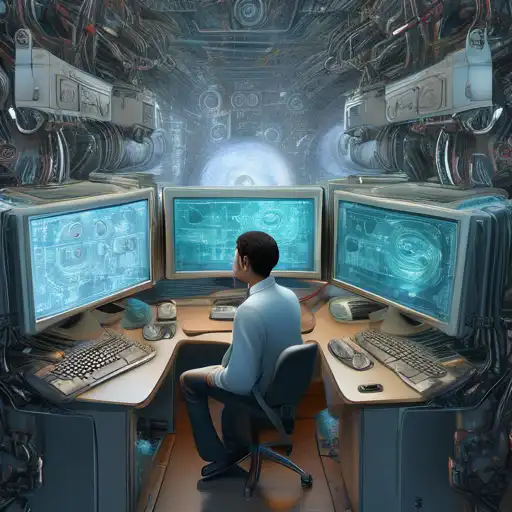Introduction to Computer Vision
Computer vision is a fascinating field of artificial intelligence (AI) that enables machines to interpret and understand the visual world. By leveraging digital images from cameras and videos and deep learning models, machines can accurately identify and classify objects—and then react to what they "see."
The Science Behind Computer Vision
At its core, computer vision involves the automatic extraction, analysis, and understanding of useful information from a single image or a sequence of images. It seeks to replicate the complexity of the human visual system, enabling computers to recognize patterns and features in visual data.
Key Technologies Powering Computer Vision
- Deep Learning: A subset of machine learning that uses neural networks with many layers to analyze various factors of data.
- Image Processing: The technique of performing operations on an image to extract information or enhance it.
- Pattern Recognition: The ability of machines to identify patterns in data, which is crucial for object detection and classification.
Applications of Computer Vision
Computer vision has a wide range of applications across different industries. Here are a few examples:
- Healthcare: From diagnosing diseases through medical imaging to assisting in surgeries, computer vision is revolutionizing healthcare.
- Automotive: Self-driving cars use computer vision to navigate roads, recognize traffic signs, and avoid obstacles.
- Retail: Automated checkout systems and inventory management are made possible through computer vision.
- Security: Facial recognition and surveillance systems enhance security measures in public and private spaces.
Challenges in Computer Vision
Despite its advancements, computer vision faces several challenges, including:
- Data Quality: The accuracy of computer vision systems heavily depends on the quality and quantity of the training data.
- Computational Resources: Processing and analyzing large volumes of visual data require significant computational power.
- Privacy Concerns: The use of facial recognition and surveillance raises ethical and privacy issues.
The Future of Computer Vision
The future of computer vision is incredibly promising, with ongoing research and development pushing the boundaries of what machines can see and understand. Innovations in AI and machine learning continue to enhance the capabilities of computer vision systems, making them more accurate and efficient.
As we move forward, the integration of computer vision in various sectors will undoubtedly transform how we interact with technology, making our lives easier and more connected. For more insights into the latest trends in AI and machine learning, explore our AI Trends section.
Conclusion
Computer vision is a key technology driving the future of AI, enabling machines to see and interpret the world around them. With its wide range of applications and the continuous advancements in AI, the potential of computer vision is limitless. As we overcome the current challenges, we can expect to see even more innovative uses of this technology in the years to come.
